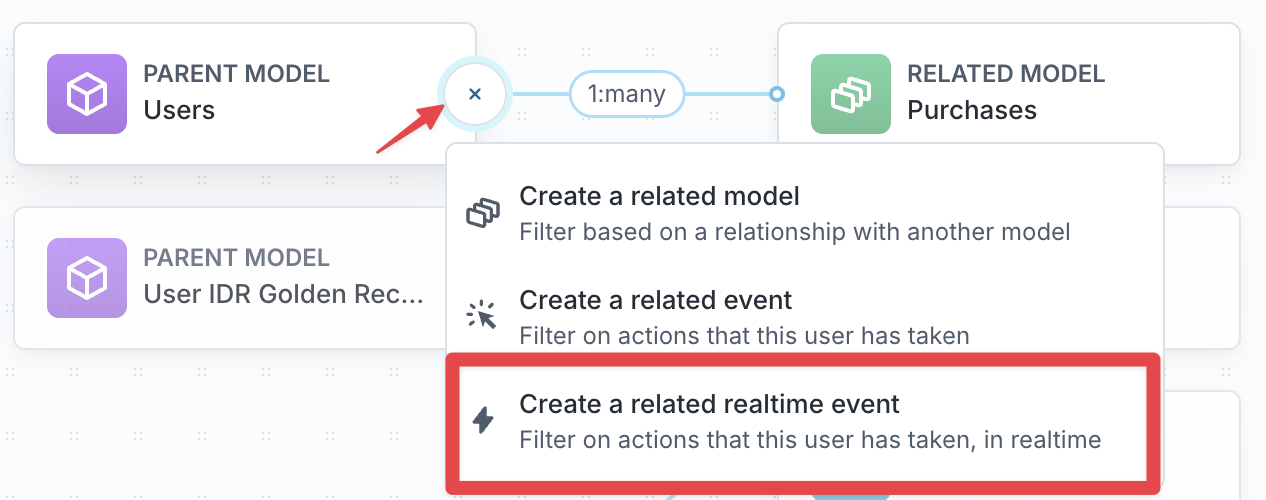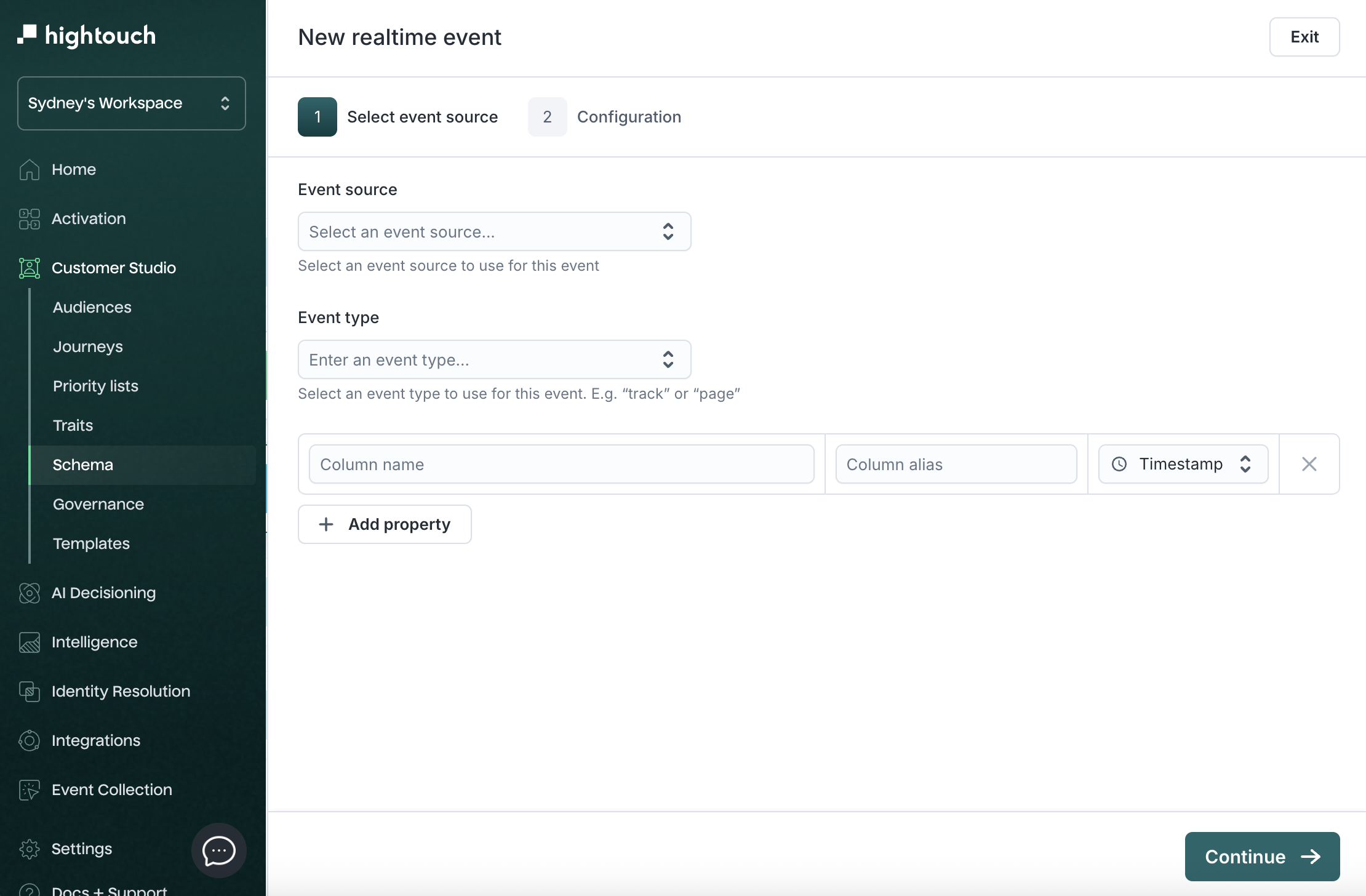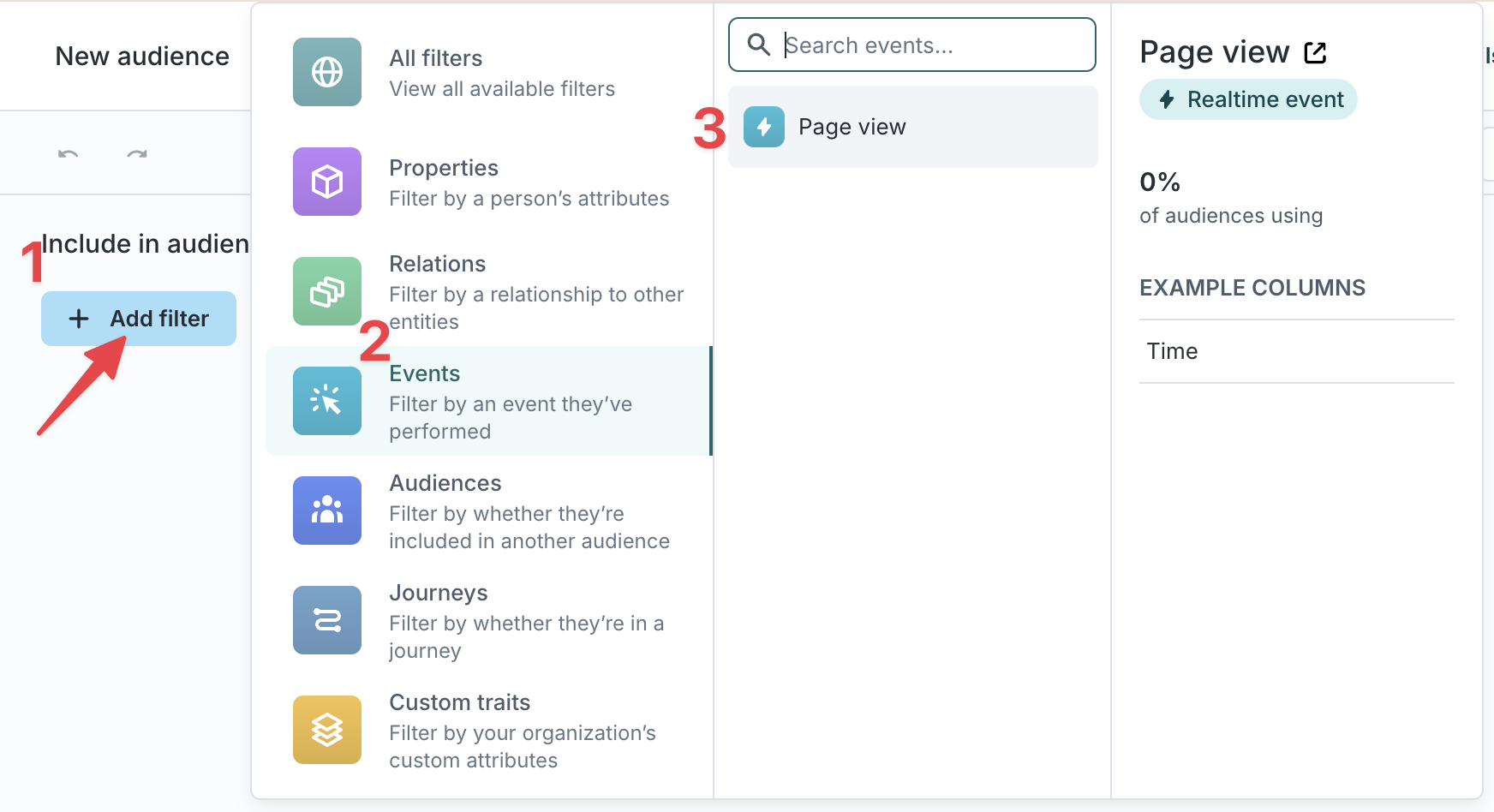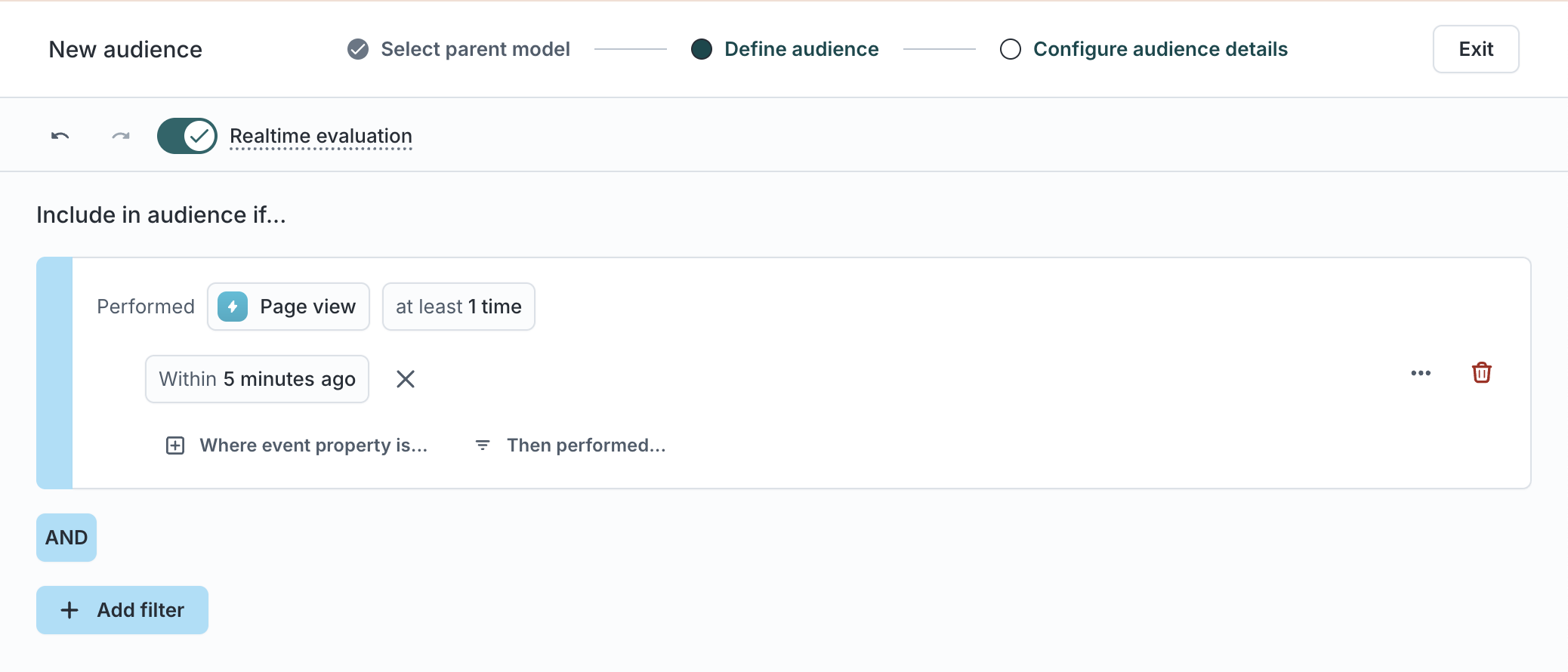| Audience | Marketers, Platform admins |
| Prerequisites |
|
Real-Time Audiences allow Hightouch to evaluate audience membership continuously based on real-time events—like product views, purchases, or session activity. When users enter or exit the audience, Hightouch can sync them to your marketing tools in seconds. This supports fast-changing campaigns like same-session personalization, behavioral triggers, and immediate suppression.
Learning objectives
After reading this article, you’ll know how to:
-
Connect and evaluate audiences based on real-time events
-
Enable and configure real-time syncs
-
Understand the evaluation and sync model used
-
Decide when real-time audiences are the right approach
Overview
Real-Time Audiences use an in-memory evaluation engine to determine audience membership as events arrive. Instead of querying the warehouse on a schedule, Hightouch caches your audience filters and evaluates incoming data—like checkout_started, page_view, or order_completed—in real time.
This is different from batch audiences, which re-run on a fixed interval and rely entirely on warehouse data.
When to use real-time audiences
Use real-time evaluation when your campaign logic depends on session activity or very recent user behavior.
| Use case | Method |
|---|---|
| Scheduled campaign refresh | Batch sync |
| Triggered messages within minutes | Event streaming |
| Experience changes within the same session | ✅ Real-Time Audience |
Examples:
-
Suppress a user from a campaign as soon as they make a purchase
-
Show a product recommendation if someone browsed a category but didn’t convert
-
Send a push notification if a user abandons checkout within the last 2 minutes
How it works
Real-Time Audiences rely on a hybrid model:
-
Audience filter logic is cached in memory
-
Events are evaluated as they arrive
-
Traits (like
LTV,loyalty_tier, orchannel) are joined from the warehouse -
When a user qualifies or exits, Hightouch triggers a real-time sync
Supported destinations
You can sync real-time audiences to destinations that support real-time delivery:
- Facebook Custom Audiences
- Google Ads Customer Match
- Braze
- Iterable
- Segment
- Amplitude
- Webhooks
Set up a real-time audience
Step 1: Connect an event stream
Before you can evaluate real-time audiences, Hightouch must receive event data.
Step 2: Create a real-time event model
To evaluate real-time events in an audience, you first need to add a related real-time event to your parent model in the schema.
-
Go to Customer Studio > Schema
-
Locate or create a new parent model (usually Users)
-
Click the plus (+) icon next to the parent model

-
Select Create a related realtime event
-
In the Select event source screen:
- Choose the event source from the dropdown (e.g. Snowplow, Rudderstack, or Hightouch Events)
- Enter an event type (e.g.
track,page,order_completed) - Define event properties by adding columns and optional aliases
- Set the timestamp column (used to filter by recency)
-
Click Continue

-
In the Configuration step:
- Give your model a name (e.g.
Checkout started events) - Optionally, add a description
- Confirm the timestamp column
- Map the relationship back to the parent model by selecting a foreign key (e.g. user_id)
- Give your model a name (e.g.
-
Click Create realtime event to save the model

Step 3: Create or update a saved audience
-
Go to Customer Studio > Audiences
-
Create or open an audience
-
Make sure to choose the parent model connected to the real-time event model
Step 4: Add a real-time event condition
-
In the audience builder, click Add filter
-
Choose Event and select your real-time event model

- Add event conditions (e.g. "performed within last 5 minutes")

-
Click Continue
-
Finalize audience settings and click Finish
Step 5: Choose your integration method
Once your real-time audience is set up, you can deliver audience updates using one of two methods:
| Method | Best for | Description |
|---|---|---|
| Event-driven sync | Campaign tools, CRMs, ad platforms | Pushes audience entry/exit events to supported destinations in real time |
| Real-time API | Websites, apps, personalization engines | Lets you query audience membership on-demand for immediate decisioning |

Option 1: Event-driven sync
Receive real-time entry/exit events through a destination integration.
-
In your audience, go to the Syncs tab
-
Click Add Sync
-
Select a Destination
-
Under Sync frequency, select Real-time
-
Select the identifier (e.g.,
user_id,email) -
Choose removal behavior:
- Remove from audience
- Do nothing *Archive (if supported)
-
Click Create sync
Option 2: Real-time API pull
Use the Hightouch Personalization API to query audience membership in real time. This is ideal for same-session personalization, where your website, app, or backend needs to instantly decide which experience to show a user.
How it works:
- Your app makes a high-speed API call at the moment of interaction
- Hightouch returns whether the user is in a specific audience
- You decide how to personalize based on audience membership (e.g. promo eligibility, suppression, banner targeting)
Example use cases:
- Suppress a discount banner if the user already purchased
- Recommend products to users in a "High intent + Viewed product" audience
- Show different landing pages based on lifecycle stage
Example request:
GET /api/v1/audiences/{audience_id}/memberships/{user_id}
Authorization: Bearer <API_KEY>
Response:
{
"isMember": true
}
Step 6: Publish and monitor
-
Click Publish
-
Hightouch will begin evaluating users and delivering updates in real time
-
Monitor performance via Sync logs or your API response logic
Example: Suppression use case
Goal: Hide a promo banner if a user just made a purchase
Audience filters:
- Event:
order_completedin the last 5 minutes - Trait:
LTV > 300 - Property:
channel = web
Sync:
- Real-time webhook to your personalization platform
- Uses
user_idto remove the user from the audience instantly
Result:
The user sees the banner, completes a purchase, and is removed from the campaign audience in real time—before they reload the page. This prevents the promo from showing again during the same session.
Best practices
- Use for session-based, event-triggered, or real-time decisioning campaigns
- Keep event filters narrow and recent (e.g. last few minutes) for fast evaluation
- Use traits like
LTV,loyalty_tier, orlast_seento enrich logic—without overcomplicating - Monitor delivery with sync logs or API responses, and set up alerts for failures